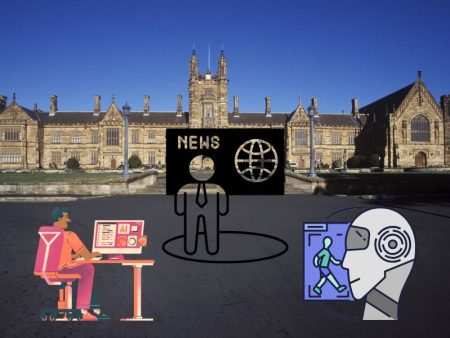Let’s talk about something we’ve all wondered, quietly, while sipping lukewarm coffee at 2am trying to finish a landing page.
Can AI actually understand tone?
I mean, not just spit out words that kinda-sorta sound okay. But really capture tone? Like formal for a law firm? Casual for a fashion blog? Playful for a brand that sells glitter socks with puns on the packaging?
We’re not just asking whether AI can write. That debate’s already old news. We’re asking: Can it write like us? Like a human who gets tone, rhythm, and nuance—even the difference between “hello” and “hey”?
I had to find out. So I ran a little experiment. I tested three different tones—formal, casual, and playful—using an AI Writer, and spoiler alert: the results were fascinating. (And sometimes hilarious.)
But before we dive into the test, let’s unpack the question a bit.
Wait… What Even Is Tone?
Tone in writing is like the vibe you get when someone texts you “k.”
It’s not just the words—it’s how they feel.
Tone is the difference between:
- “I appreciate your inquiry. We will respond shortly.”
and - “Got your message—hang tight, we’ll get back to you soon!”
and - “Yo! Thanks for sliding into our inbox 😎 We’re on it!”
Same message. Wildly different tone.
The magic (or chaos) lies in word choice, sentence length, punctuation, emojis (when appropriate), and knowing when to say “however” versus “but.”
Humans do this effortlessly.
But… can an AI?
Let’s find out.
The Experiment: One Message, Three Tones
I used a basic prompt:
Write a short paragraph introducing a new product—a sleek, eco-friendly water bottle—for an online store.
Then I ran it through three tones using an AI Content Generator: formal, casual, and playful.
Here’s what happened.
1. Formal Tone: Hello, Mr. Suit-and-Tie
“We are pleased to introduce our latest innovation: a premium, eco-conscious water bottle designed for optimal durability and sustainability. Crafted with high-grade, BPA-free materials, this product exemplifies our commitment to environmental responsibility and modern utility. Now available exclusively in our online store.”
Thoughts?
Okay. It’s polished. Professional. Could totally appear on a corporate brochure, right? There’s zero fluff, and it even throws in the classic “crafted with” line, which is a dead giveaway you’re in formal territory.
It won’t win any hearts, but it’ll win boardrooms.
Can AI do formal tone?
✅ Absolutely. Almost too well, actually.
2. Casual Tone: Your Chill Online BFF
“Meet your new favorite bottle. It’s eco-friendly, crazy durable, and looks way better than that cracked plastic one you’ve been hauling around. Bonus? It’s BPA-free and super comfy to carry. Snag yours today in our shop.”
Thoughts?
Now this sounds like someone who gets me. Not too wordy. Friendly but not over the top. You can almost hear the wink in “Snag yours today.”
It feels natural—like the brand that sends you newsletters you actually want to open.
Can AI do casual?
✅ Yep. And honestly? It nailed the tone better than some junior writers I’ve worked with (no shade).
3. Playful Tone: The Sassy Overachiever
“Say goodbye to boring bottles. This sleek little hydration hero is here to save your thirsty self—with style. It’s eco-friendly, BPA-free, and basically your water’s new best friend. It even fits in cup holders (because yes, that matters). Grab one before your houseplants get jealous.”
Thoughts?
I literally laughed. “Your water’s new best friend”? “Before your houseplants get jealous”?
This AI is doing bits, and I’m here for it.
It took risks. It leaned into personality. It danced on the edge of silly—without falling off.
Can AI do playful?
✅ Surprisingly, yes. I didn’t expect it to go full cheeky, but it did.
So… Is This the Future of Tone?
Here’s where things get weird.
The AI didn’t just understand tone. It committed to it.
It adjusted the length of sentences, vocabulary, even the emotional charge of each word. That’s not just parroting—it’s voice modulation.
But let’s pump the brakes a little. Before we start giving AI a Pulitzer…
Where It Still Struggles
Tone is more than just style—it’s context-aware.
Here’s what I noticed:
- Overcommitment: Sometimes the AI tries too hard. Playful turns into “Did a 12-year-old write this?” territory. Formal becomes stuffy. Casual sometimes slips into meh.
- No real-time audience feedback: A good human writer adjusts tone on the fly—based on feedback, brand nuance, or cultural subtleties. AI? It still needs you to course-correct.
- Nuance under pressure: Say you’re addressing something sensitive—a product delay, a pricing change, a security update. AI can help, but you still need to bring the emotional intelligence.
That said, AI is learning fast. And for quick tone tests, it’s kind of magic.
But… Can It Replace You?
If you’re a copywriter, marketer, or content nerd like me, you might feel a tiny chill down your spine. “Wait… if AI can do tone… do they even need me anymore?”
Here’s the truth, in plain English:
AI can write. But it can’t care.
It doesn’t know your brand’s weird inside jokes. It hasn’t cried over a rebrand. It doesn’t know your customers by heart. It doesn’t know when to not crack a joke.
It can’t feel the silence after a tough headline. It can’t get goosebumps from the right three words in the right order.
You? You can.
So yeah, AI is powerful. Especially for first drafts, tone variations, or when your creative brain takes a nap. But the final copy? The one that feels right?
That’s still you.
(With a little help from your AI friends.)
Want to Try This Without Jumping Through Hoops?
Some tools want your email, your cat’s birthday, and your entire browsing history before you even test a headline. Rude.
But there’s an AI Copywriting Generator No Sign Up that lets you test things fast. No forms. No nonsense. Just words.
Pop in a prompt, play with tone, and see how it handles your sassiest ideas or your most buttoned-up copy.
Fair warning: it might surprise you.
Final Thoughts (aka TL;DR)
So, can AI understand tone?
Yes—and better than most of us expected.
From stiff formal press releases to playful, pun-filled product blurbs, it’s got range.
But let’s be real: tone without intention is just noise. And intention? That’s still a very human thing.
Use AI to explore your voice.
Let it throw spaghetti at the wall.
But you get to decide what sticks.
Because at the end of the day, good copy doesn’t just sound good. It feels right.
And no algorithm’s cracked that code—yet.
Over to you.
Ever tried AI for tone tweaks? Love it? Hate it? Laugh-cried at a line it wrote?
Drop your thoughts in the comments or send over your funniest AI-generated sentence.
Let’s swap war stories. 😄


